
views
X
Trustworthy Source
Centers for Disease Control and Prevention
Main public health institute for the US, run by the Dept. of Health and Human Services
Go to source
Working Out to Support Weight Loss
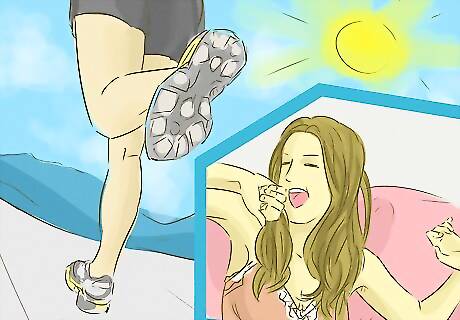
Work out in the morning. If you currently exercise in the afternoon or evening, consider changing your exercise routine to the morning hours. Some studies have shown that morning workouts boost your body's ability to burn calories from stored fat instead of using calories you've consume through food during the day. Schedule workouts for 20 to 30 minutes after you wake up. In addition, getting up in the morning will help ensure you don't get too busy or tired during the day and then skip a workout later on. Changing up your routine can be difficult at first. But after a couple days of getting up earlier (and going to bed a little earlier), you'll be just fine with your new AM routine.
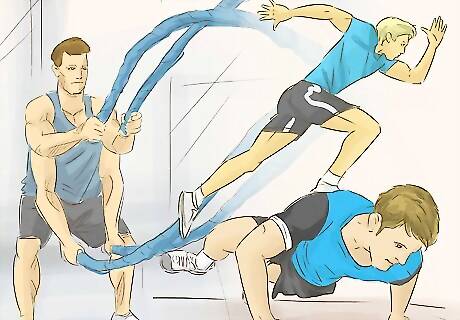
Do high-intensity interval training (HIIT). HIIT workouts are popular these days and for good reason. Studies have shown they help burn more fat and keep your metabolism elevated longer than traditional exercise. Typical HIIT workouts alternate between bursts of very high intensity exercise (like sprinting) and bouts of more moderate intensity exercise (like jogging). Include one to two days of HIIT workouts each week. Perform 45 minutes of cardio with a 10-minute warm up and 10-minute cool down. The 25 minutes in between should be devoted to sprinting for 30 seconds to one minute and returning to moderate intensity for two to four minutes. High-intensity is 80 to 85 percent of your maximum heart rate. You cannot keep up a conversation and you get extremely “winded.” Moderate-intensity is 65 to 80 percent of maximum heart rate. You can keep up a conversation with a friend, but are short of breath. Alternate between these two.
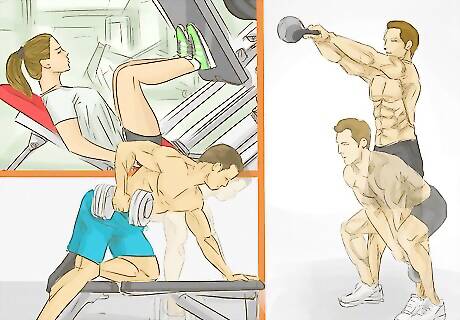
Start weight training. On alternating days where you are not doing a HIIT workout, include some strength training. Keep in mind that it takes a while to build muscle. However, regular weight training along with a healthy diet can help you to build muscle mass over the course of four to 12 weeks, which will boost your metabolism. Strength training exercises help you build lean muscle mass. The more lean muscle mass you have, the higher your metabolism will be. Start your week with popular exercises like bicep curls, tricep presses, chest presses, rows, squats, lunges, and calf raises. These are quick to do and can be easily incorporated into your current exercise routine. Try new weight machines, kettle bells or TRX straps as well. Better yet, work out with a friend or personal trainer who can show you how to use new equipment. Work to the burn for 12 to 15 reps. Do two to three sets.
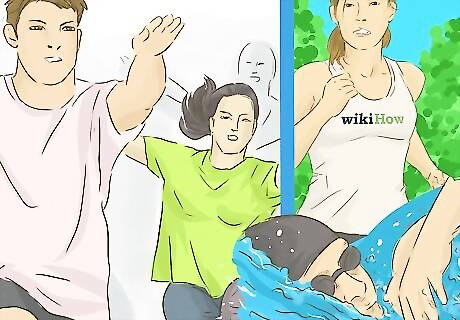
Include other forms of cardio. In addition to HIIT and strength training workouts, include a few days of other types of cardiovascular activity. These types of exercises also help support weight loss. Like HIIT, cardio also burns a significant amount of calories per session. Include 150 to 300 minutes of cardio exercises each week (HIIT can count towards this as well). Other activities can include: jogging/running, using the elliptical, dancing, swimming or taking an aerobics class. One of the main differentiating points of cardio and HIIT, is that these cardio exercises are done at a constant, moderate intensity and not alternating between high and moderate intensity levels.
Eating for Weight Loss

Create a daily calorie deficit of 1,250 calories. One pound is equal to 3,500 calories, so 5 pounds equals 17,500. Over the course of 14 days, this equals a 1,250 calorie deficit per day. You can create part of this deficit with exercise, but you will also need to cut calories from your diet to meet your weight loss goal of 5 pounds in 2 weeks. Although cutting calories results in weight loss, cutting too many calories out from your diet can actually end up in slower weight loss, nutrient deficiencies and fatigue. Also, remember that you're burning calories through exercise as well. This in combination with a smaller calorie deficit from your diet will help you reach your goal easily. Use a food journal or food tracking app to find out how many calories you're currently eating and subtract 500 to 750 from that number. Also continue to track your calories to ensure you're not eating too much and staying within your calorie goal.
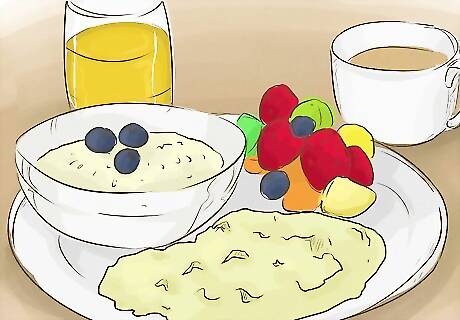
Eat a hearty breakfast. Breakfast is an important meal, especially when you're trying to lose weight. Don't just choose any breakfast food. This meal should be rich in protein and fiber to help fuel your day and keep you feeling satisfied longer. The combination of higher protein amounts and higher fiber help you feel more satisfied long after your meal has been completed. In addition, the fiber adds bulk to your meal so you feel more full. Try oatmeal with low-fat milk, 0% fat Greek yogurt with ¼ cup of low calorie granola and a handful of berries or a 2-egg omelet with non-starchy veggies or a boiled egg.
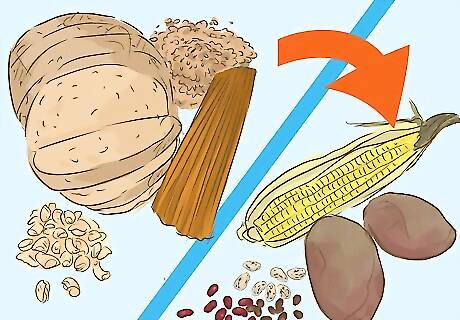
Try to limit carbohydrates in your diet. Losing 5 pounds in 2 weeks can be easy, but certain diet patterns make it even easier to do. Limiting some carbohydrates in your diet can help you shed pounds a little quicker. Carbohydrates are found in many foods. However, limiting certain types of carbs may help you lose that 5 pounds easier than just following a low calorie diet alone. Carbohydrates are found in the following foods: sugar or foods that have added sugar, dairy products, grains, starchy vegetables and legumes and fruits. Instead of eating breads, rice or pasta, replace these carbs with non-starchy vegetables, such as broccoli, spinach, cauliflower, celery, and peppers. These are high in fiber, vitamins and minerals that are essential to your overall health. Remember that all sugars are carbohydrates, so cut out foods with added sugar to reduce your intake. Check nutritional information and read ingredient lists to check for added sugar.
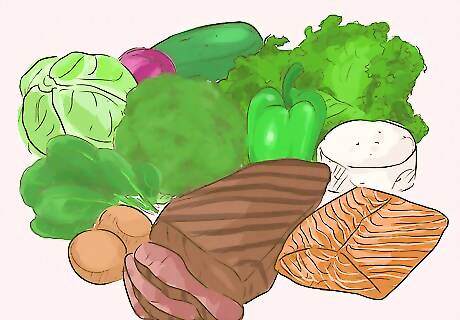
Eat protein and vegetables at every meal. Like breakfast, protein heavy meals supplemented with low calorie vegetables can help you reach your weight goal faster than just a low calorie diet. Instead of counting grams of protein daily, focus on eating one to two servings of leaner cuts of protein at every meal and snack. This will make sure you're getting enough of this essential nutrient. One serving of protein is about 3 to 4 oz or about a 1/2 cup of items like beans or lentils. Make sure to measure your portions to help you stay on track. Choose leaner proteins like poultry, eggs, lean beef, tofu or low-fat dairy to help you stay within your calorie range. Pair your protein with any type of vegetable. Try to stick to non-starchy vegetables like salads, broccoli, peppers, Brussels sprouts or tomatoes since these are very low in calories. Include a 1 cup serving or 2 cup serving of salad greens. They're also high in fiber and other essential nutrients which can help you feel more satisfied with less calories overall.

Replace processed foods with more nutritious foods. Limiting or avoiding processed foods during your two week weight loss window will help you to meet your goal without any hang-ups. Processed foods are known to be slightly higher in calories, added sugars, unhealthy forms of fat and many other added preservatives. Eating processed foods on a regular basis or in large quantities can stall weight loss or even cause weight gain. Cut out processed foods like: alcohol, sweetened beverages like soda, candies, baked goods, ice cream, breakfast pastries, sugary cereal, fried foods and processed high fat meats. For example, swap out your evening cookie with fruit and dark chocolate or even a small yogurt for fewer calories and sugar. Or instead of ordering a fried chicken sandwich, opt for grilled chicken breast on a bed of greens.














Comments
0 comment